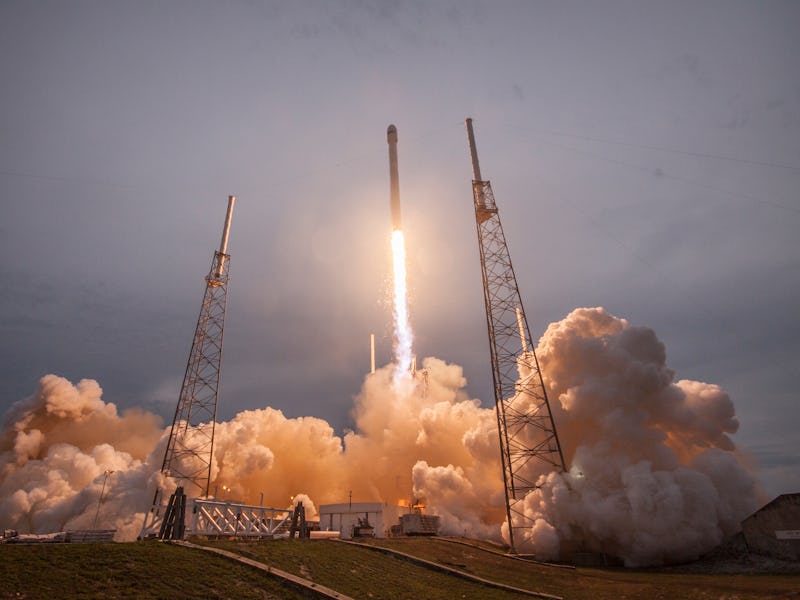SpaceX was not kidding around when it said it was shooting to begin launching rockets again in December of this year. In spite of a September launchpad explosion that destroyed a perfectly good Falcon 9 rocket and created indefinite delays for its next few missions, Elon Musk’s spaceflight company looks geared to return to flight on December 16.
Over the past few weeks, satellite company Iridium Communications Inc. has been excitedly tweeting that they plan to launch 10 small satellites on the top of a Falcon 9 rocket very soon. On Thursday, Iridium announced that launch would take place on December 16 — assuming the Federal Aviation Administration gives SpaceX the green light. At 3:36 p.m. Eastern, the cluster of small satellites will (hopefully) hitch a ride to orbit, lifting off from Launch Complex 4 at Vandenberg Air Force Base in California.
The company has been busy investigating the cause of the September 1 explosion and combing over a trove of data to determine what happened and why. Not long after the incident, SpaceX identified the explosion was caused by a breach in the cryogenic helium system of the second stage liquid oxygen tank. But it wasn’t until November that Musk revealed more information during an interview with CNBC. Musk described the problem that caused incident as a first in the history of spaceflight.
Musk explained that the explosion happened when the liquid oxygen needed to fuel the rocket was so cold it actually froze solid. Currently, SpaceX hasn’t released too many specifics about their fueling process, and it’s not entirely clear how the liquid oxygen solidified. These questions should be answered in SpaceX’s full accident report, which is expected to be released very soon.
The FAA, NASA, and the U.S. Air Force are still currently investigating the September incident. If SpaceX is given the green light to launch on December 16, they will return to flight just three months after the explosion — which would be an incredible feat and huge boost of confidence for both the company and its customers (including NASA).
The company’s previous launch failure occurred in June 2015 when a Falcon 9 rocket disintegrated in flight, just 2 minutes and 19 seconds after liftoff. Following that incident, it took SpaceX approximately six months to return to flight.
Helium tanks were also involved in the 2015 incident, however, SpaceX says that the two were not related. If the September 1 explosion was indeed caused by an operational error in the fueling process, it means SpaceX will not have to overhaul its rocket design and launch infrastructure — and will simply need to provide a fix to its launch procedures moving forward.
